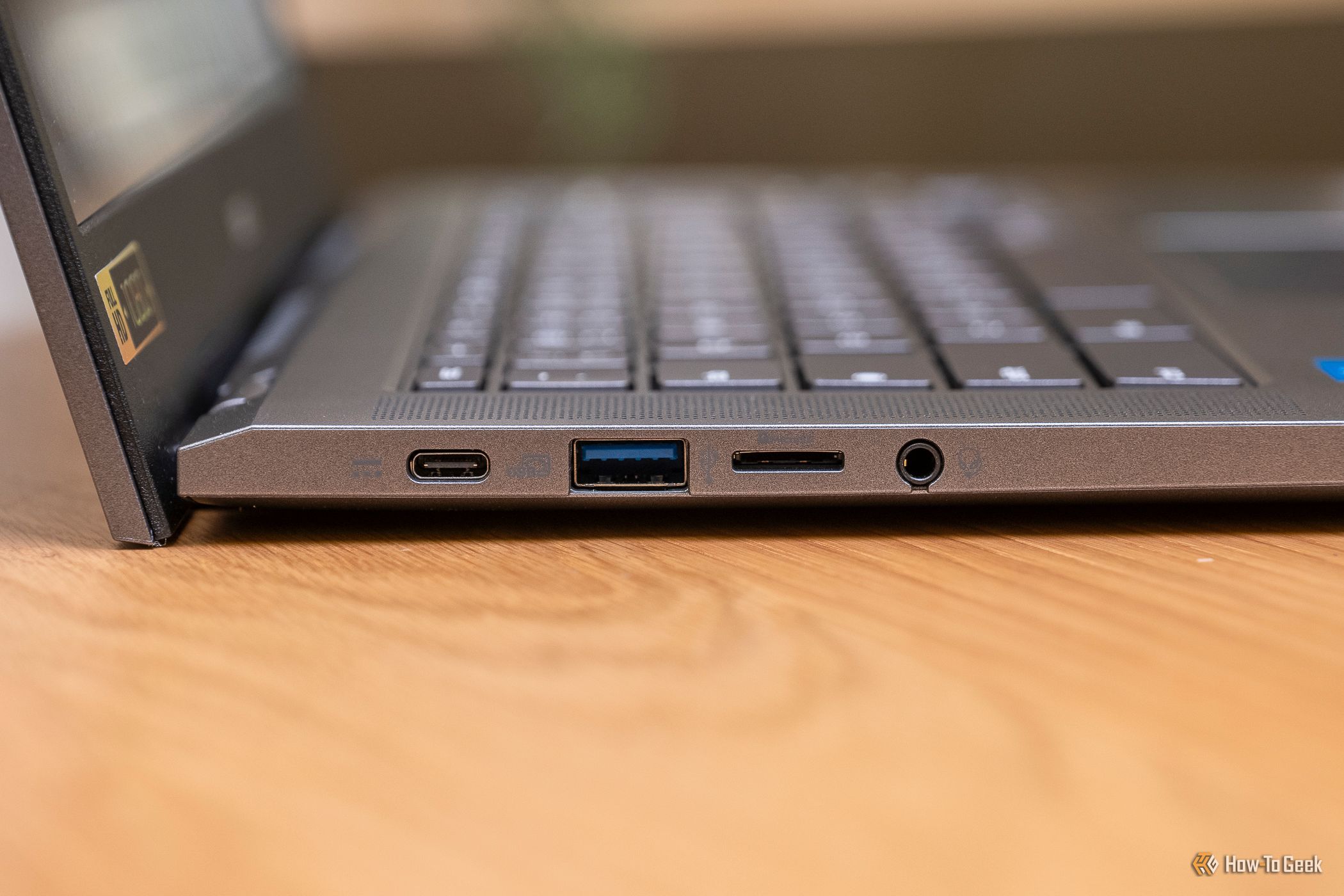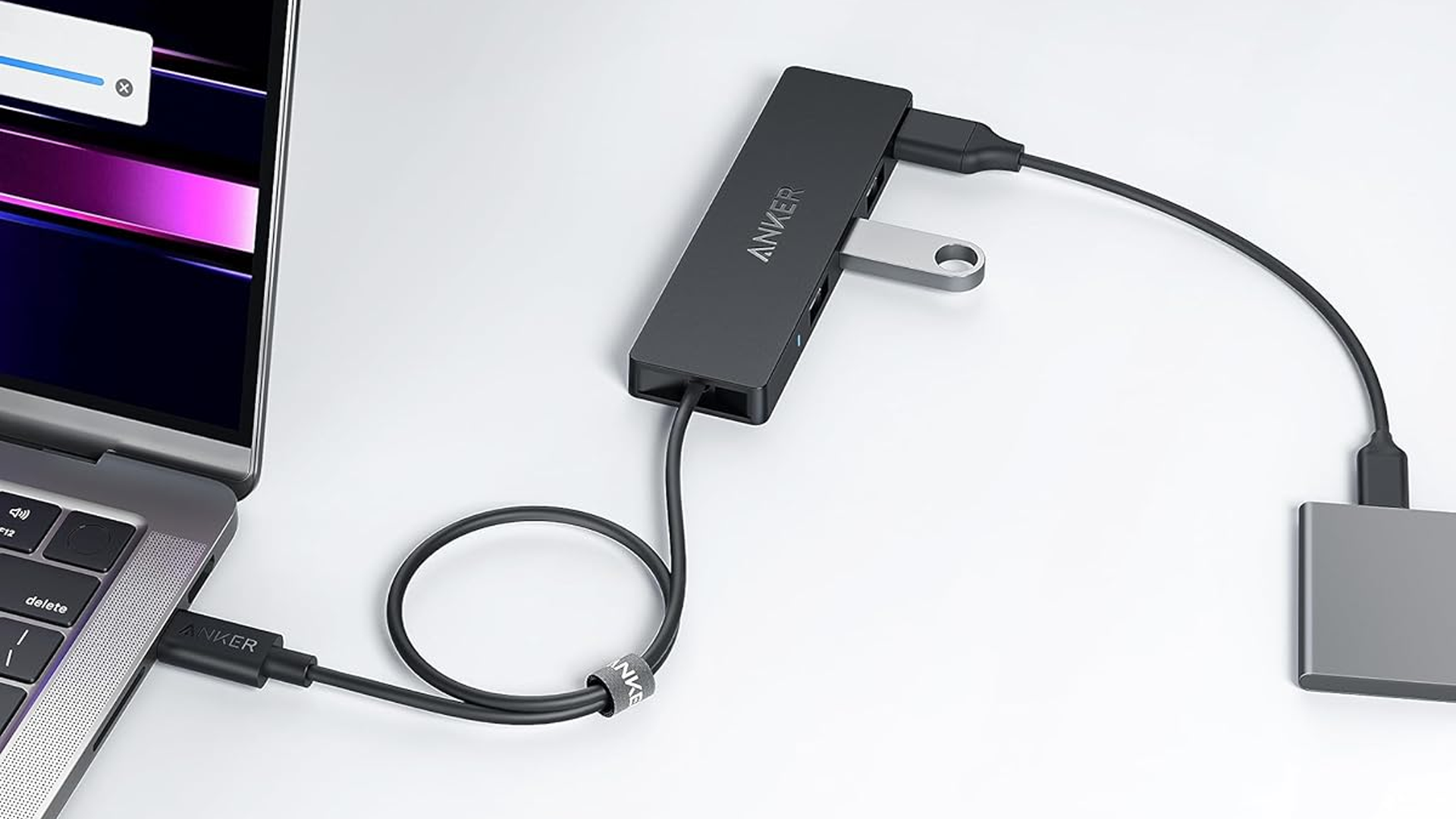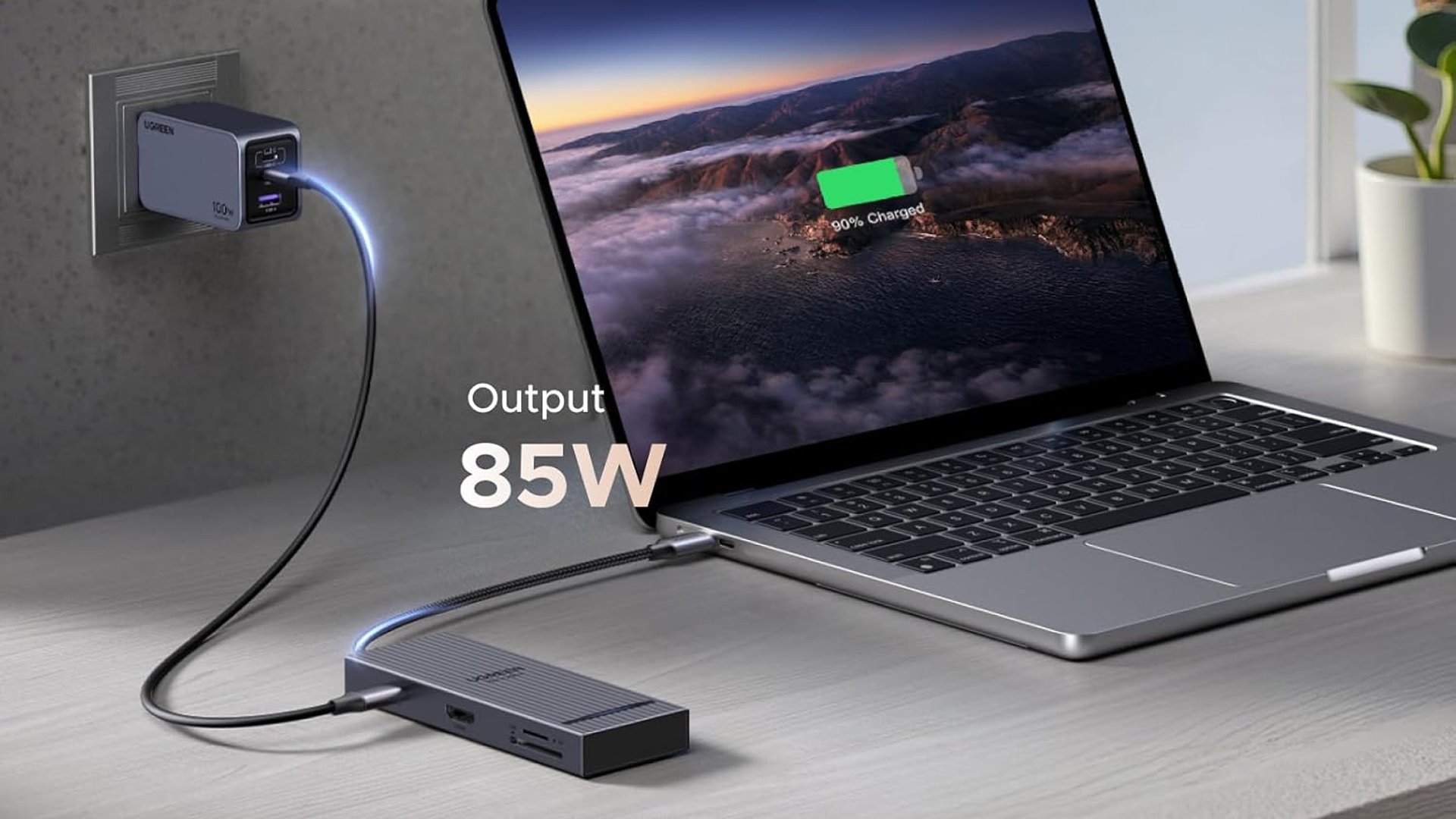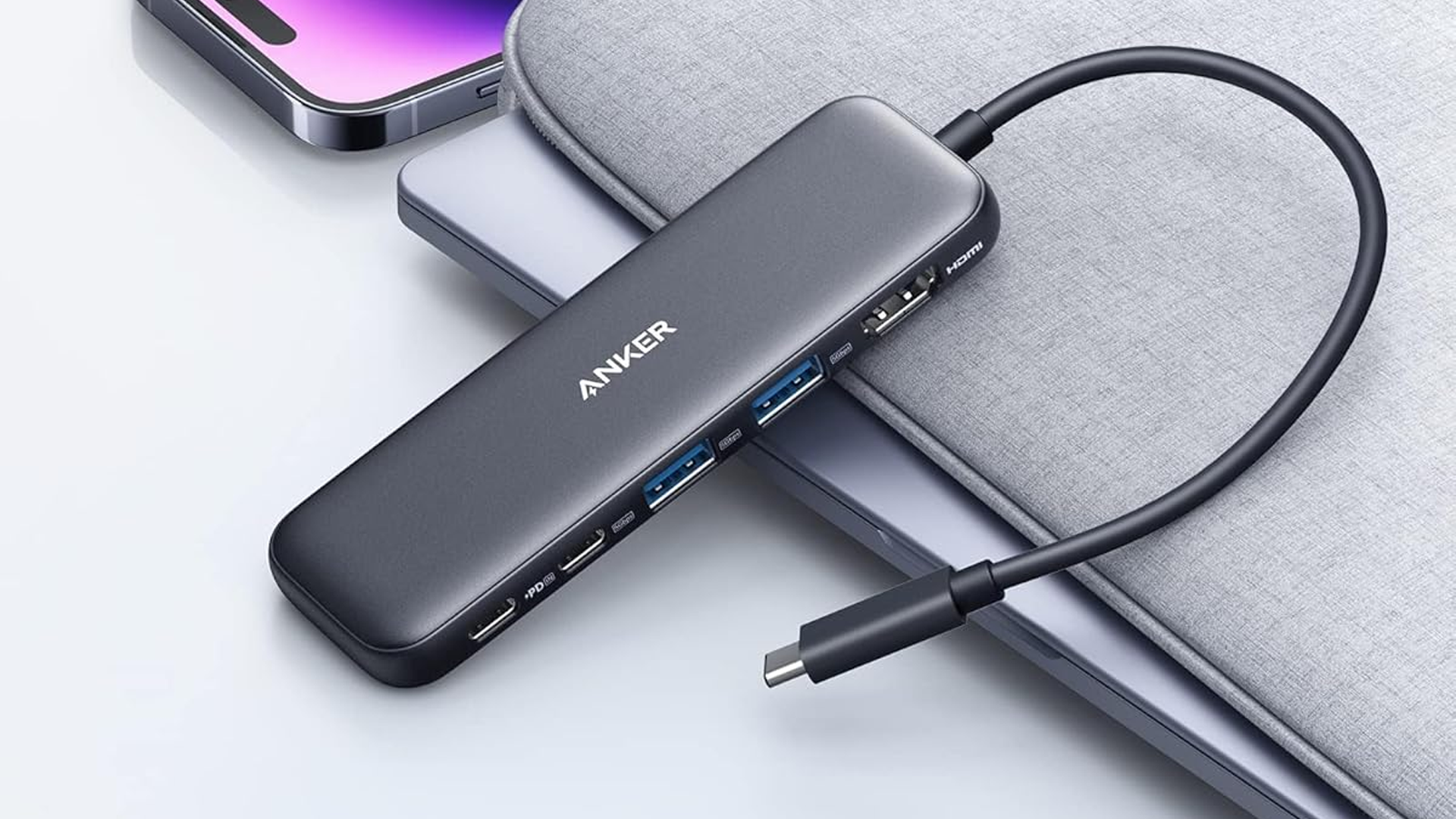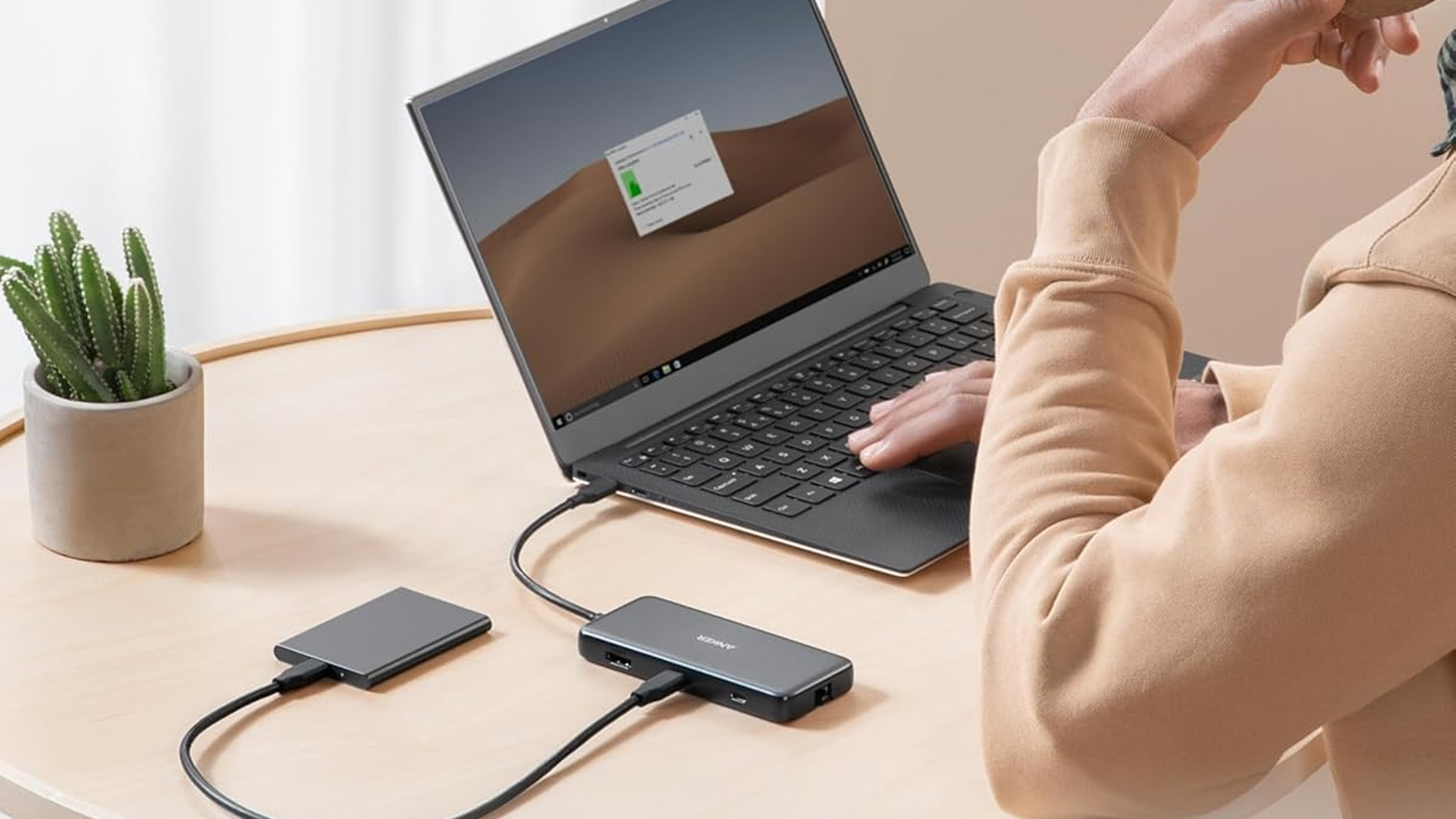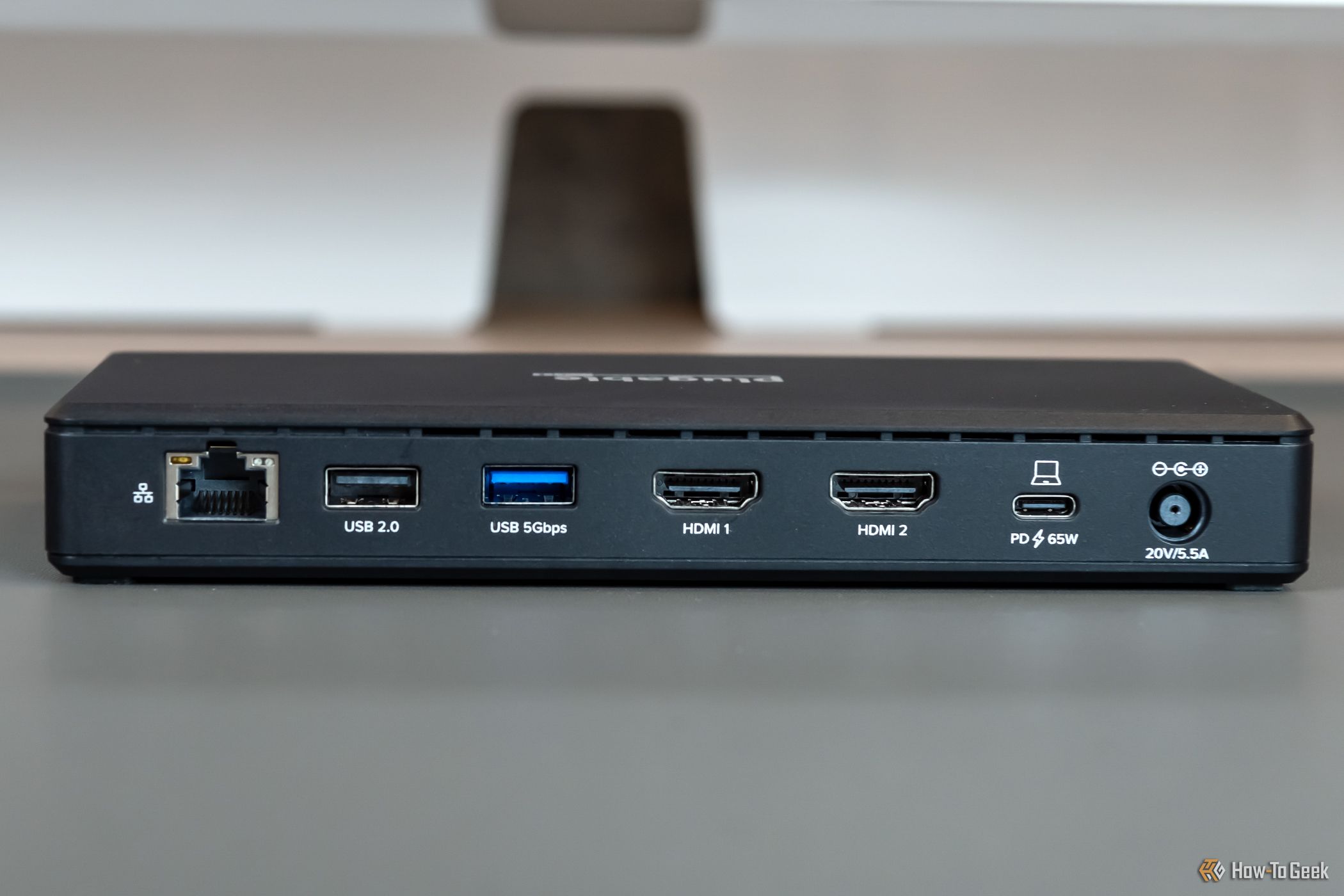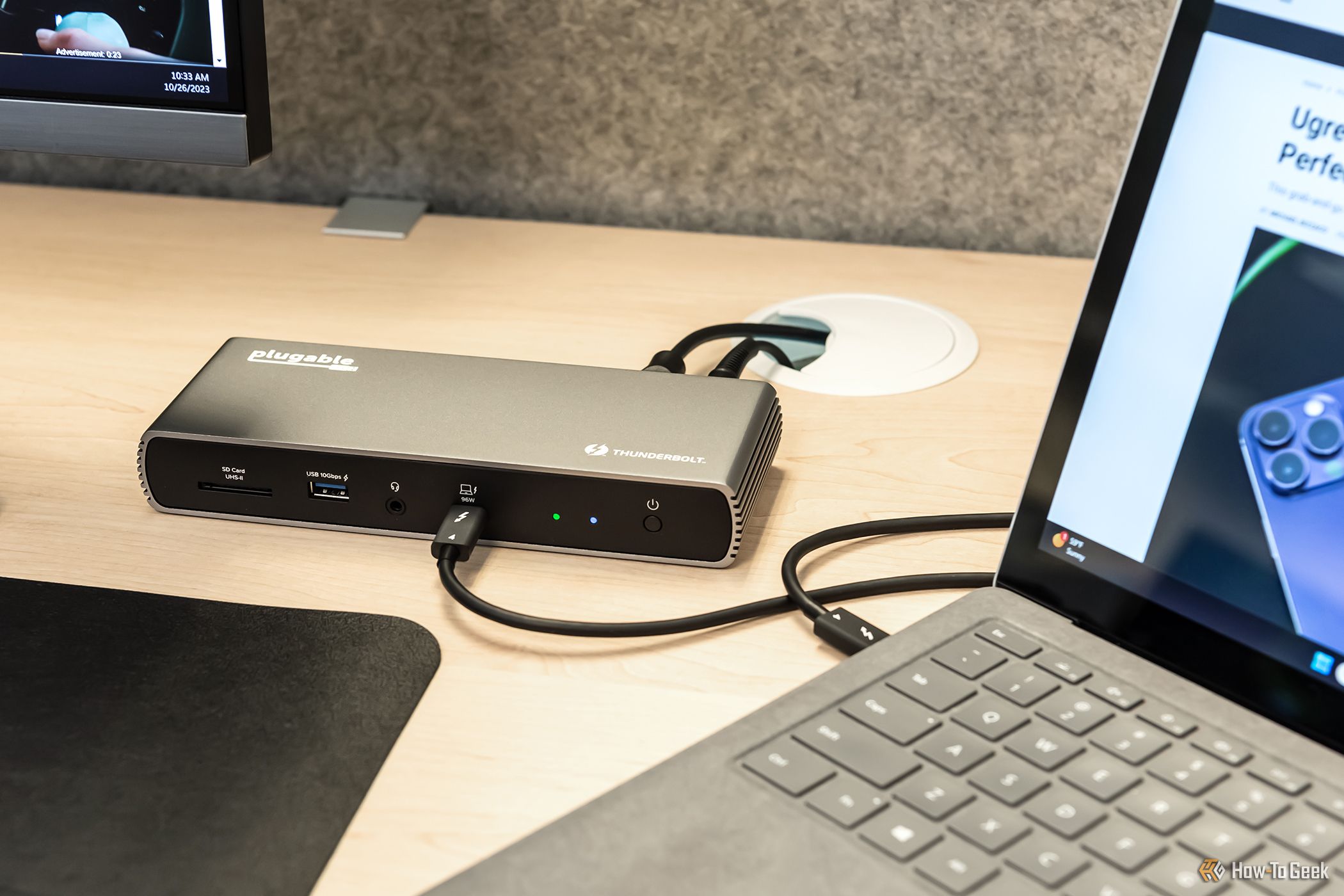Summary
- Most Chromebooks are now USB-C based, making it easier to add extra ports.
- Portable USB-C hubs are compact and affordable, ideal for travel purposes.
- Desk-based docking stations offer constant charging and a plethora of ports for a desktop-like experience.
Are you looking for ways to add extra ports to your Chromebook? Look no further! USB-C docks are the solution to your problem, and they come in all shapes and sizes.
From ultra-budget-friendly to all the bells and whistles, here are several of my favorite USB-C docks to expand your Chromebook’s abilities and heighten your ChromeOS experience at the same time.
Most Chromebooks Are USB-C Based Now
With the majority of Chromebooks having USB-C, adding extra ports to your laptop is easier than ever before.
This means that your Chromebook will be compatible with all of those USB-C hubs. There are a host of USB-C hubs out there that range from ultra-budget-friendly to costing more than your Chromebook itself did.
The only exception here is with Thunderbolt hubs, though most of those are still backward compatible with traditional USB-C ports, meaning they’d work with your Chromebook most likely.
Portable USB-C Hubs
There are a number of portable USB-C hubs on the market. Portable hubs are great for throwing in your laptop bag, backpack, purse, or even pocket when you hit the road.
They don’t take up much space, but can provide quite a bit of functionality in a compact form-factor, making them ideal for travel. Plus, portable hubs are typically on the more affordable side of the pricing spectrum, making them easier to justify when it comes to pairing with a Chromebook.
Anker’s 4-port USB 3.0 Hub
To start with, there’s Anker’s budget-friendly 4-port USB 3.0 hub. It requires a single USB-C connector on your Chromebook and delivers four USB-A ports.
This is great if your Chromebook came with no USB-A ports at all, or maybe it only came with one or two and you need more. The hub is compact, budget-focused, and even has a two-foot cable built into it.
UGREEN’s Revodok Pro 8-in-1 USB-C Hub
Stepping up is the UGREEN Revodock Pro USB-C hub. This portable dock requires just a single USB-C cable tethered to the side of your Chromebook to deliver eight total ports.
Those eight ports include two 10Gbps USB-C ports, a 10Gbps USB-A port, another 480Mbps USB-A port, 4K HDMI, both microSD and SD card slots, and a 100W USB-C PD charging pass-through port.
All of these ports will allow you to charge your laptop, hook up external devices, and even offload photos and videos to your computer from a camera through a single cable.
Anker’s 5-in-1 USB-C Hub
While it might not do quite as much as the UGREEN hub above, Anker’s 5-in-1 USB-C hub is a solid choice for those who prefer to stick with name brands. Anker has garnered quite a reputation for itself in the computer accessory world, and this hub is no different.
It delivers two USB-A 5Gbps ports, a USB-C 5Gbps port, and 4K60 HDMI output. Alongside that is a 100W USB-C PD charging pass-through port, so you’ll be able to power up your Chromebook while using this dock, even if you only have a single USB-C port available.
This is an ultra-compact hub that easily slips into your backpack, purse, or even pocket, making it something that will greatly increase your Chromebook’s effectiveness and capabilities.
Anker’s 555 8-in-1 USB-C Hub
While UGREEN’s 8-in-1 hub above had a lot of capabilities, Anker’s 555 8-in-1 USB-C hub swaps one of the ports out for something a bit more useful, I think.
Delivering a 10Gbps USB-C port, two 10Gbps USB-A ports, 4K60 HDMI, and both SD and microSD, this hub has a lot in common with the UGREEN hub above. However, where it differs is in its Gigabit Ethernet port on the end, bringing wired networking to your Chromebook.
The compact form-factor of this hub makes it ideal for travel, and the port selection ensures you’ll be able to plug in just about any device you could come across. Plus, I love that it offers wired networking if you’re in a place that doesn’t have the best Wi-Fi signal.
Desk-Based USB-C Docking Stations
On the pricier side of USB-C hubs, we have desk-based docking stations. Typically more expensive than portable hubs, most USB-C docking stations designed to stay at your desk provide something portable hubs simply can’t: constant charging.
While many portable hubs offer charging passthrough, that requires you to supply a charger, find an outlet, and set things up. With a desk-based docking station, you’ll typically find an ever-present wall plug that gives the dock power. This allows your Chromebook to pull from that power, which is often a much higher wattage than your Chromebook shipped with.
Plugable’s USB-C Dual HDMI Docking Station
This docking station from Plugable comes with a plethora of ports. To start with, it offers up to 65W of charging for connected computers. This means that your Chromebook will charge quickly without having to pull your portable charger out of your bag.
It also offers a number of ports. On the front is a USB-A and USB-C port, both capable of 5Gbps data speeds. There’s also a combination headphone and microphone jack.
Along the back, you’ll find the USB-C port that connects to your Chromebook, another 5Gbps USB-A port, a 480Mbps USB-A port, Gigabit Ethernet, and dual 4K60 HDMI outputs.
This dock is ideal for bringing a desk-based ChromeOS experience to life. When you arrive home, you simply have to plug the single USB-C cable into your Chromebook and two monitors, a mouse and keyboard, as well as Gigabit Ethernet all spring to life.
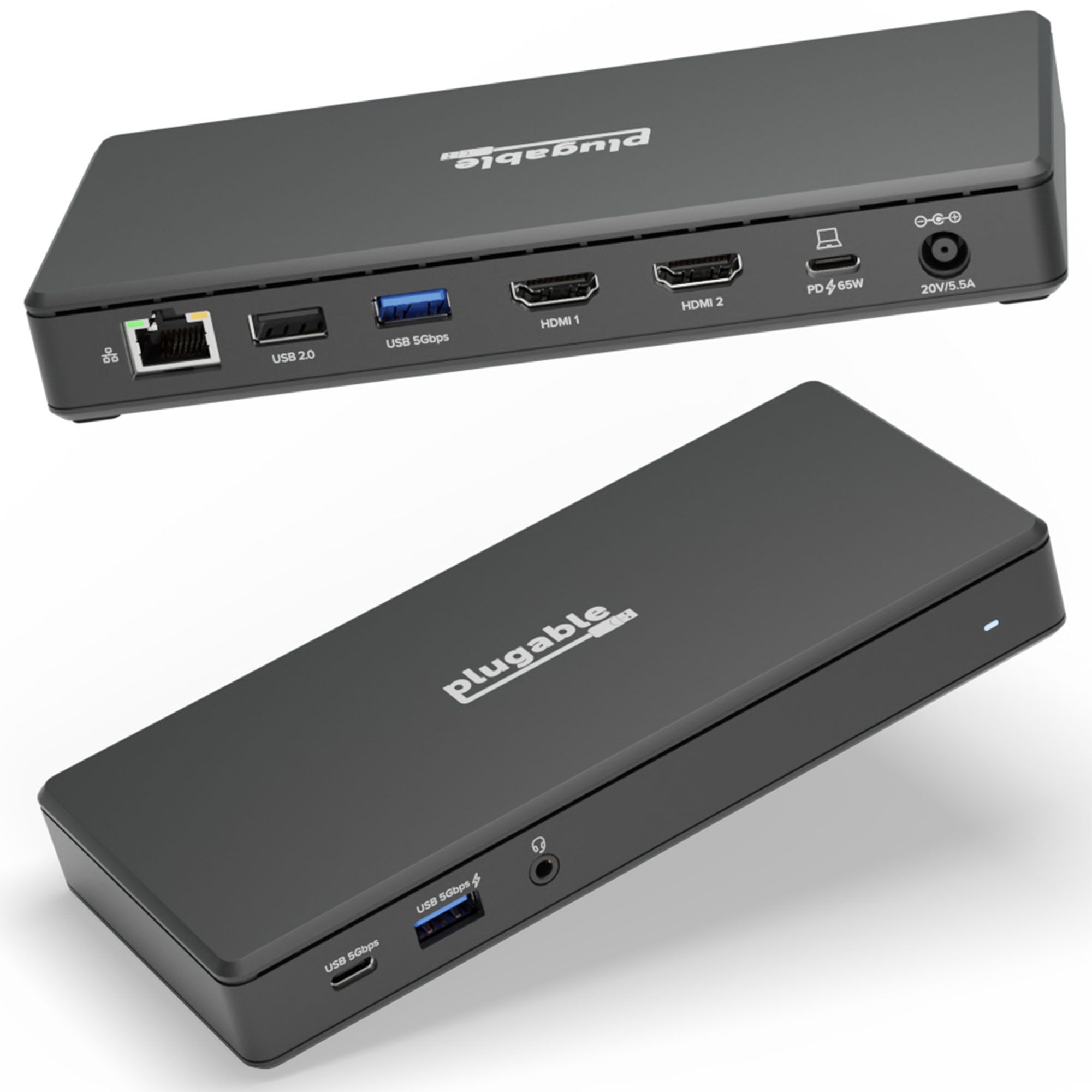
- Ports
-
USB-C, USB-A, Ethernet, 3.5mm Audio
- USB Power Delivery
-
65W
The Plugable USB-C Dual HDMI Docking Station (UD-MSTH2) is a solid choice for your single-cable setup, so long as you use Windows or ChromeOS. It supports dual 4K60 HDMI outputs, has three total USB-A ports and an additional USB-C port. While there’s Gigabit Ethernet and 65W of charging, you won’t find any SD card slots here, so that’s something to keep in mind.
Plugable’s USB4 11-in-1 Dock
Where the USB-C dual docking station above lacked in ports, Plugable’s USB4 dock shines. For full functionality, you’ll need either Thunderbolt 4 or USB4 support on your Chromebook. However, it is backward compatible with USB 3.0, 3.1, and 3.2 Chromebooks.
This dock brings a lot more to the table. You’ll find two Thunderbolt 4 ports along the back, four total 10Gbps USB-A ports, 2.5Gbps Ethernet, HDMI 2.0, and even UHS-II SD card support. Plus, it still has that analog combination headphone / microphone jack.
With up to 100W of charging available, this dock can charge even the most power-hungry of Chromebooks out there. It offers a lot of capabilities in a compact form-factor that sits neatly at your desk.
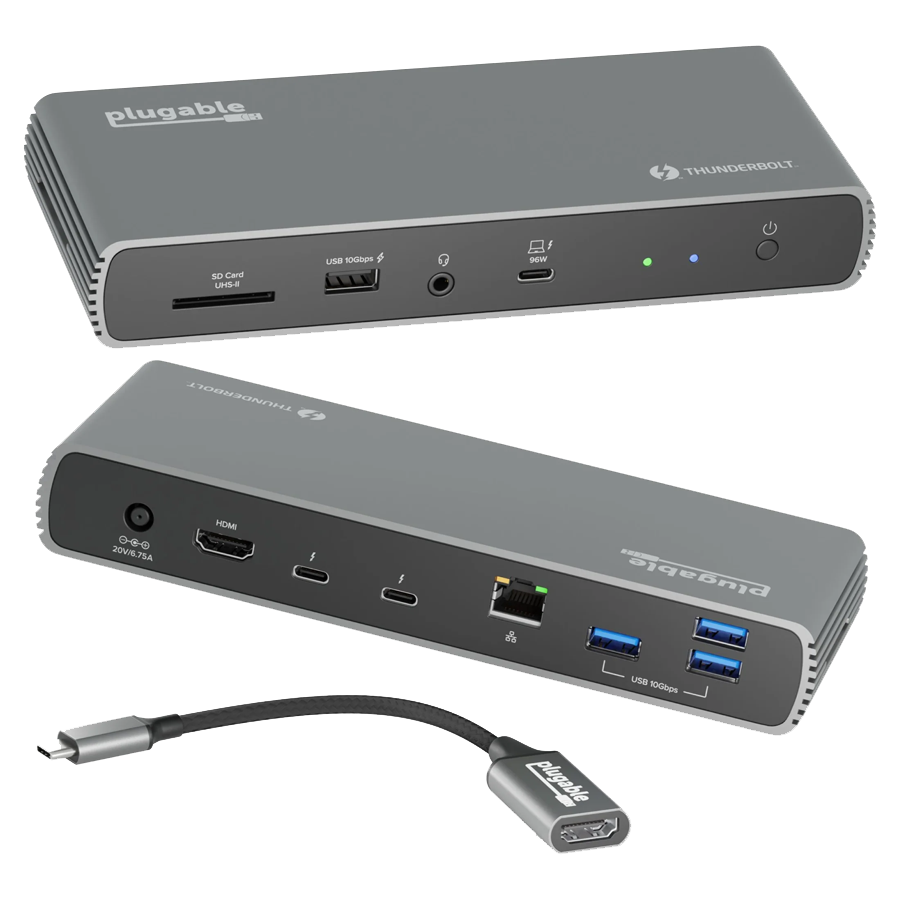
- USB Power Delivery
-
96W
- Power supply included
-
Yes
Plugable’s latest Thunderbolt 4 and USB4 docking station delivers ample I/O for the high-end setup, though HDMI 2.1 is notably lacking. However, you’ll find three Thunderbolt 4 ports with full 40Gbps capability for hooking up SSDs and more, as well as delivering 2.5G ethernet and up to 96W of certified charging to your computer all through one cable.
Anker’s 13-in-1 Laptop USB-C Docking Station
If you prefer something from Anker, then consider this 13-in-1 docking station from the famed brand.
Here, you’ll find three display outputs (two 4K60 HDMI and one 4K60 DisplayPort), alongside three 5Gbps USB-A ports, two 10Gbps USB-C ports, both SD and microSD slots, Gigabit Ethernet, and a combination headphone and microphone jack.
This dock also delivers up to 85W of charging to your Chromebook. If your Chromebook has the capability, this dock can drive up to three 4K monitors, allowing it to power quite the workstation setup from your little laptop.
This dock is definitely premium, but it can do a lot with a single cable. Designed for traditional USB-C, you shouldn’t lose any functionality here like you would on Plugable’s USB4 dock if you don’t have the latest USB standard available on your Chromebook.
Adding ports to a Chromebook is not more difficult than adding them to any laptop, or computer for that matter. While you might not think of a Chromebook as a computer that benefits from being hooked up to a bunch of peripherals, with the base performance of modern Chromebooks, it’s actually capable of quite a bit more than most people expect, as long as you have the right connections!

